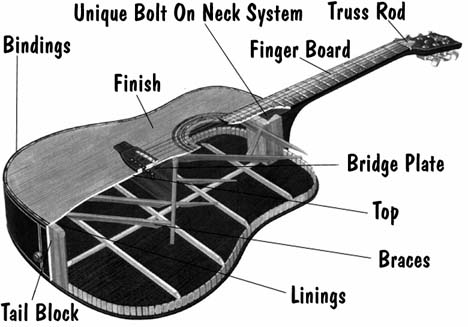Like most European string instruments, the guitar dates back thousands of years. The earliest ancient origin of what is now the modern guitar can be traced back to the Middle East, central Asia and India as early as 5,000 years ago. In 40 AD the Romans adapted and developed the four-string guitar: the oud. Elsewhere in Europe the Scandinavians developed a six-string instrument: the lut (lute). By 1200 AD, the four-string instrument had developed into two distinct types. The first, guitarra, morisca or Moorish guitar, was an instrument with a wide fingerboard and rounded back and several sound holes. The second was the guitarra latina, a Latin guitar, which resembled the modern guitar having a single sound hole and narrower neck. |  |
There are two types of guitar.
1.Acoustic guitar are not dependent on an external amplification device to be heard. It uses a soundboard, which is a wooden piece mounted to the front of the guitar body.



